The first Thursday of November is World Digital Preservation Day – a celebration of all the efforts across the world to preserve our digital heritage. To mark the occasion our archivist Simon Mackley looks at how the different facets of our University of Surrey community – our students, our staff, and our alumni – are reflected and preserved in our digital archives.

The theme of World Digital Preservation Day this year is ‘Preserving Our Digital Content: Celebrating Communities’ – so we thought it would be a good opportunity to highlight how our digital collections preserve and celebrate the history of our University community.
Our University Archive collections include the University’s own institutional archive, the records of the University’s predecessor body Battersea Polytechnic, the records of the Students’ Union, and collections of memorabilia donated by former staff and students. As well as paper records, the collections include photographs, artefacts, audio-visual items, and – increasingly – digital materials.
As with their physical counterparts, the digital items within our University Archive collections include not only the formal records of the University – such as the records of University committees and official publications like the annual prospectus – but also items created by our student, staff and alumni communities. In this blog post, I want to briefly highlight three examples from these collections, to show how digital archives can document the life of the University – and just why it is so important that we act now to preserve our digital heritage.
Student Life: Morris Dancing and Festival Scenes
Our photograph collections are a great resource for studying student life at the University – and this is no less true of digital material than with traditional printed photographs. We were delighted therefore to receive last year a donation of digital photographs from Surrey alumnus Martin Hewitt. Martin was a student at the University during the 1970s, and during this time he took a number of photographs of life on Stag Hill campus. Going through his old negatives many years later, he recognised that some of the photographs were of historical interest to the University, so he very kindly digitised them and sent the images through to us.
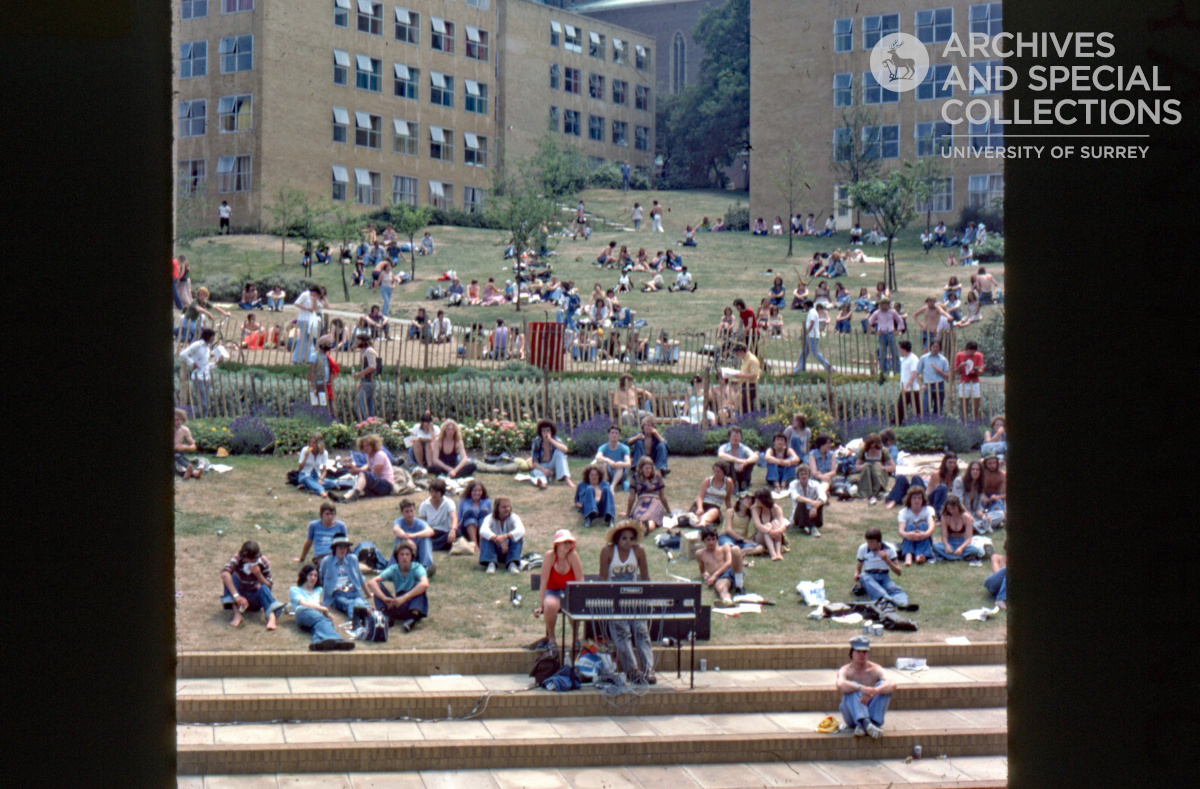
Martin’s photographs office a fantastic glimpse into the student life in the Seventies. They include snapshots of the Stag Hill Morris, the University’s Morris dancing society, dancing outside Guildford Cathedral, as well as photographs of the 1976 Surrey Free Festival.
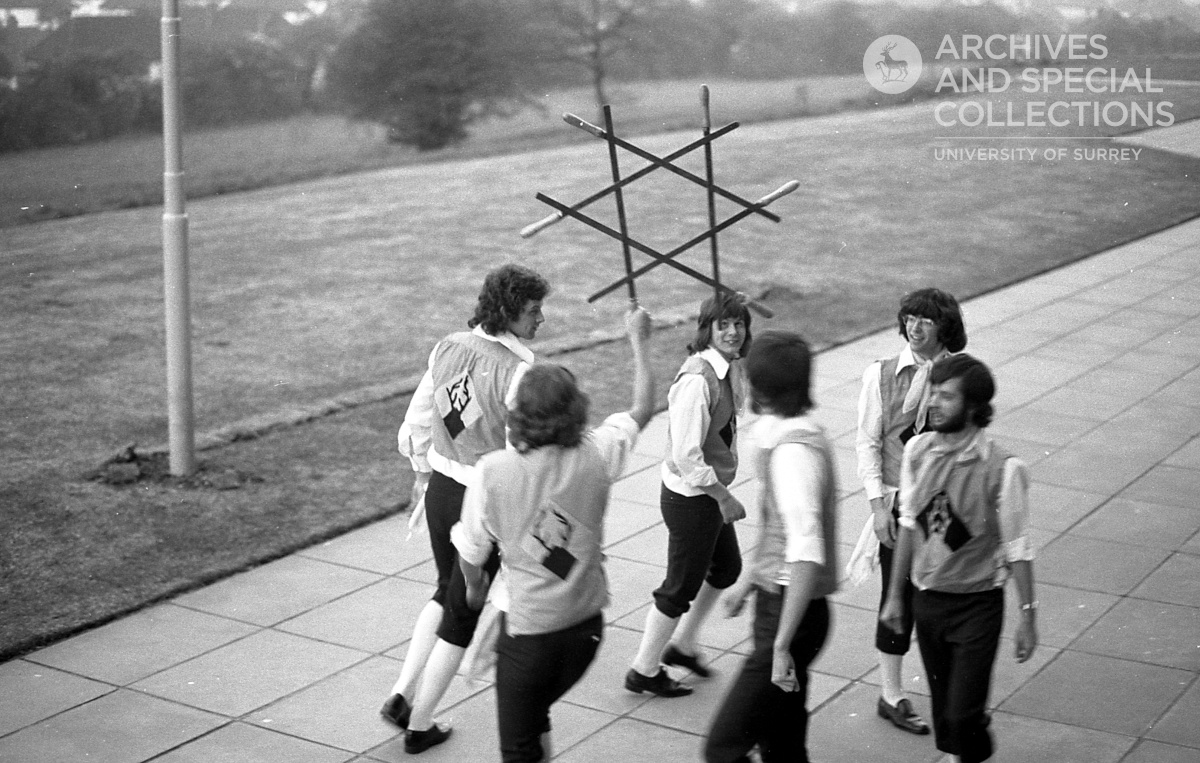
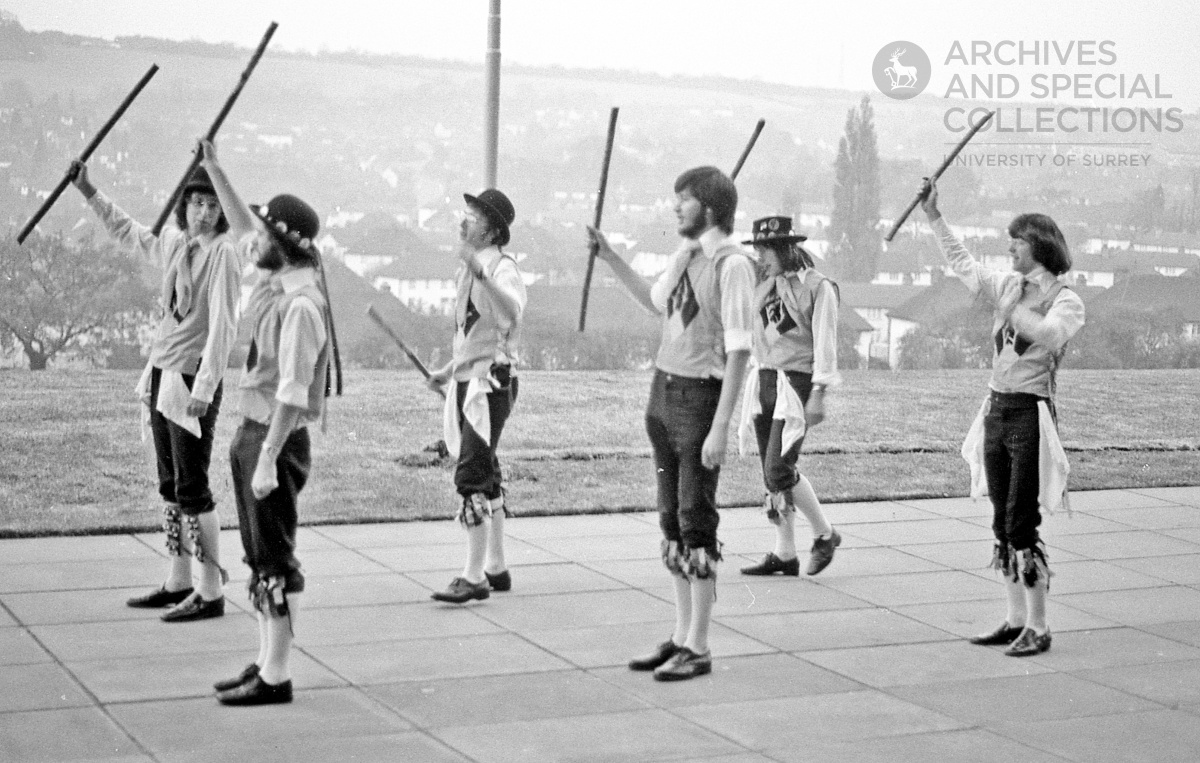
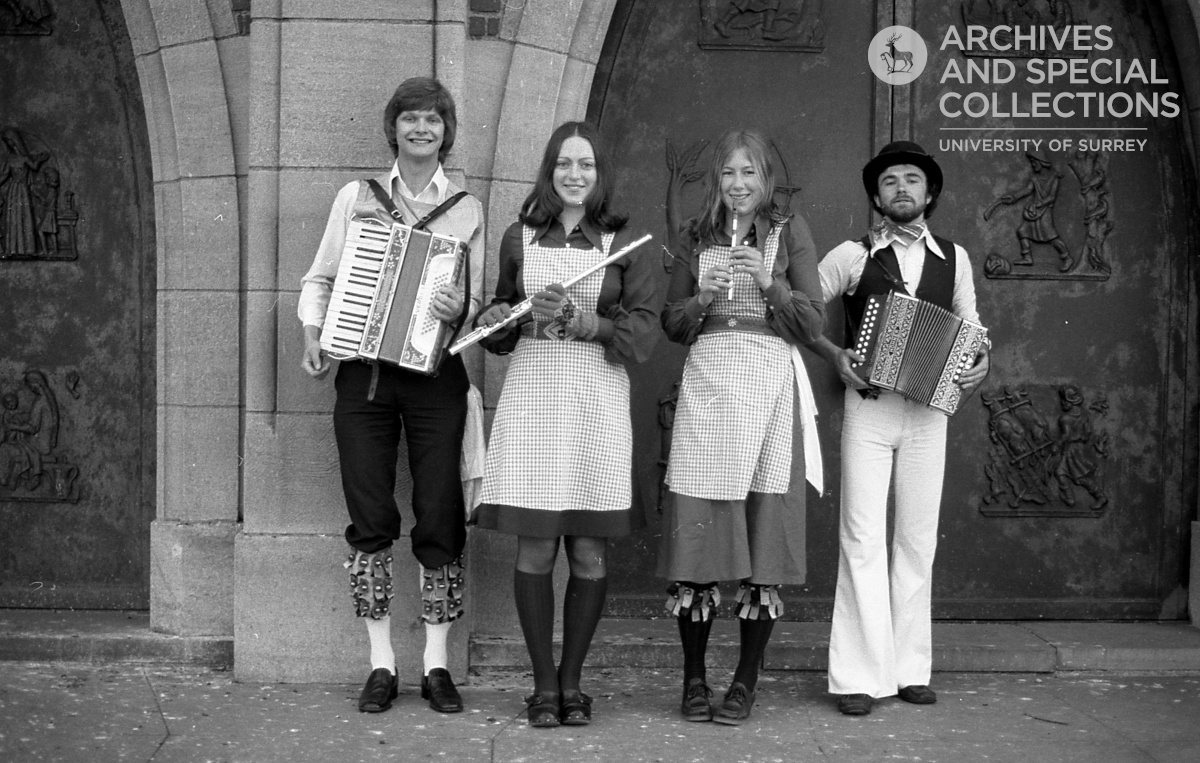
It’s important to appreciate that Martin’s photographs are only with us in the archive because they could be digitised from the original physical negatives – how many of the “born-digital” photographs taken by our current students will survive long enough to be donated to the archive, if care isn’t taken to preserve them? As we grow our digital holdings, there is therefore a need for us to actively collect similar photograph collections before they become obviously ‘historical’, if we are to ensure that this immensely valuable heritage of our student community is not lost.
Staff Networks: LGBT History on Campus
The digital records we hold can also be an important record of social change at the University. For instance, in recent years we have taken in a number of digital records from the Rainbow Network, the University’s LGBTQIA+ staff network. Although relatively small in volume, these records provide an important account of the history of the network since its founding in 2013.
Among the digital records deposited is a copy of the groundbreaking report ‘A Change in the Weather?’ from 2014, which surveyed the experiences of LGBT staff and students at the University. The report, which includes quotations from the survey responses, is a fascinating snapshot of LGBT life on campus as it was a decade ago, and will be an incredibly valuable resource for future researchers. The records also include a set of poster designs for LGBT History Month events on campus, illustrating the work of the network over the past decade.
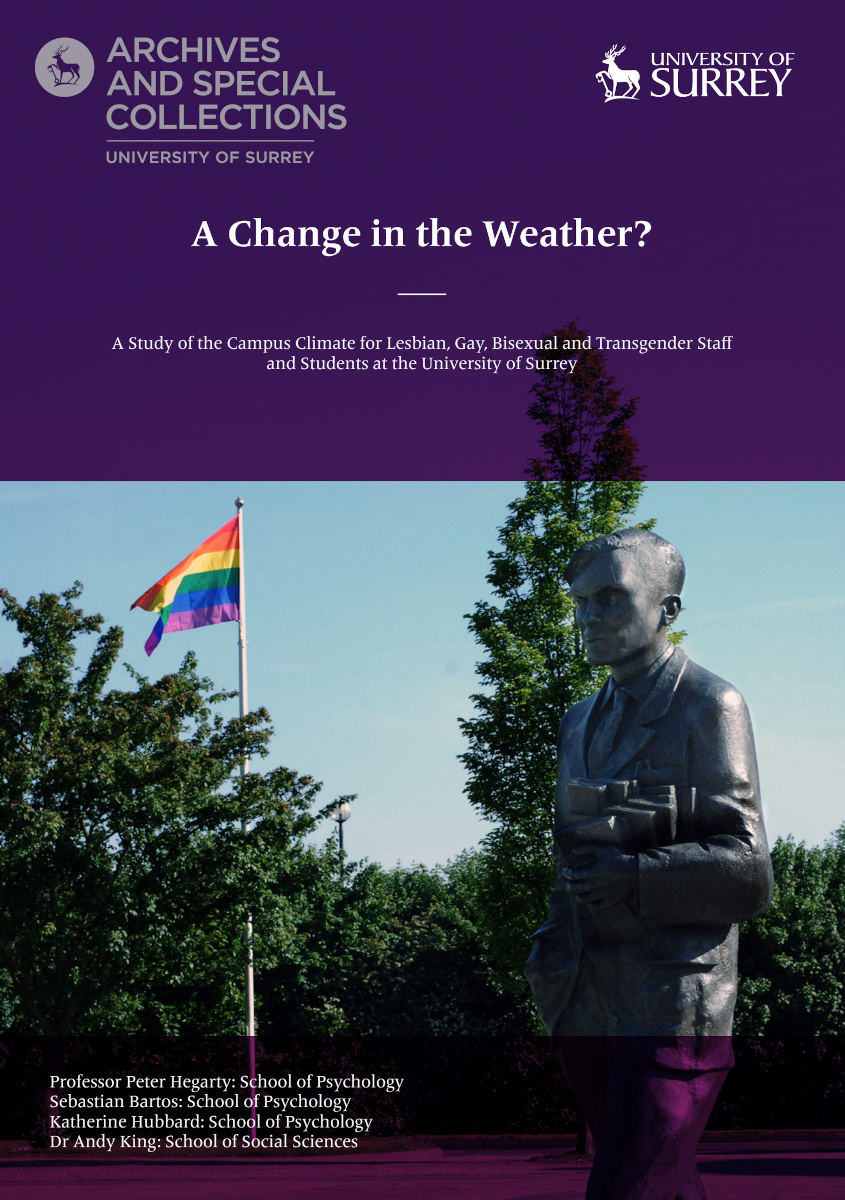
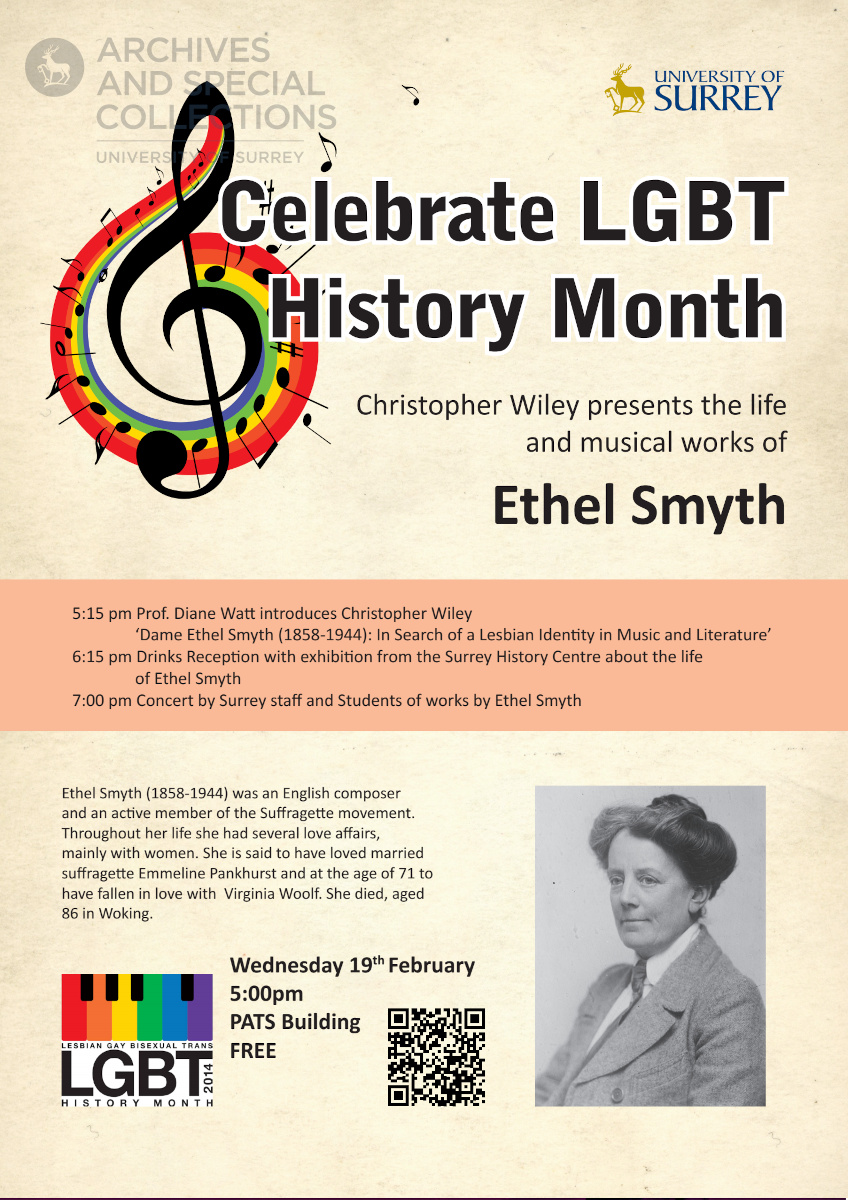
Again, it is important to remember that digital records are vulnerable to loss if they are not actively preserved. The work of volunteer-led staff groups such as the Rainbow Network are not always reflected in the ‘official’ archival record, and might all-too-easily be deleted as staff members move on – if we want to capture this important work in the University Archive, it’s essential that we act sooner rather than later to collect these items.
Oral Histories: Recollections of the Move to Guildford
Perhaps the biggest highlight of our digital University Archive collections is the Remembering Battersea Oral History Collection . This entirely digital collection comprises over seventy interviews with former students and staff, conducted between 2014-2016. Although the focus of the project – which was run by the University’s Alumni & Development Department with support from the Heritage Lottery Fund – was on the final generation of students to attend Battersea in the 1940s, 1950s and 1960s, the interviews also captured some of the experiences of the first generation to study and work at the newly-founded University of Surrey. In the clip below, former student John Quilter recalls his experience of the move to Guildford.
The Remembering Battersea Oral History Collection is a unique and irreplaceable resource; it’s vital therefore that we manage it in a way that ensures it will remain accessible and usable for decades to come. In the Archives & Special Collections team, we do this for instance by storing the recordings in file formats recommended for digital preservation, and by conducting regular to checks to make sure that the files have not been accidentally corrupted or otherwise modified.
Our archive collections are a fantastic resource for studying the history of our University community – and as this blog post has hopefully shown, our digital archives are no exception to this. Get in touch with us to find out more about any of the materials mentioned above, or if you have any digital material of your own that you think would made a good addition to the archive.
